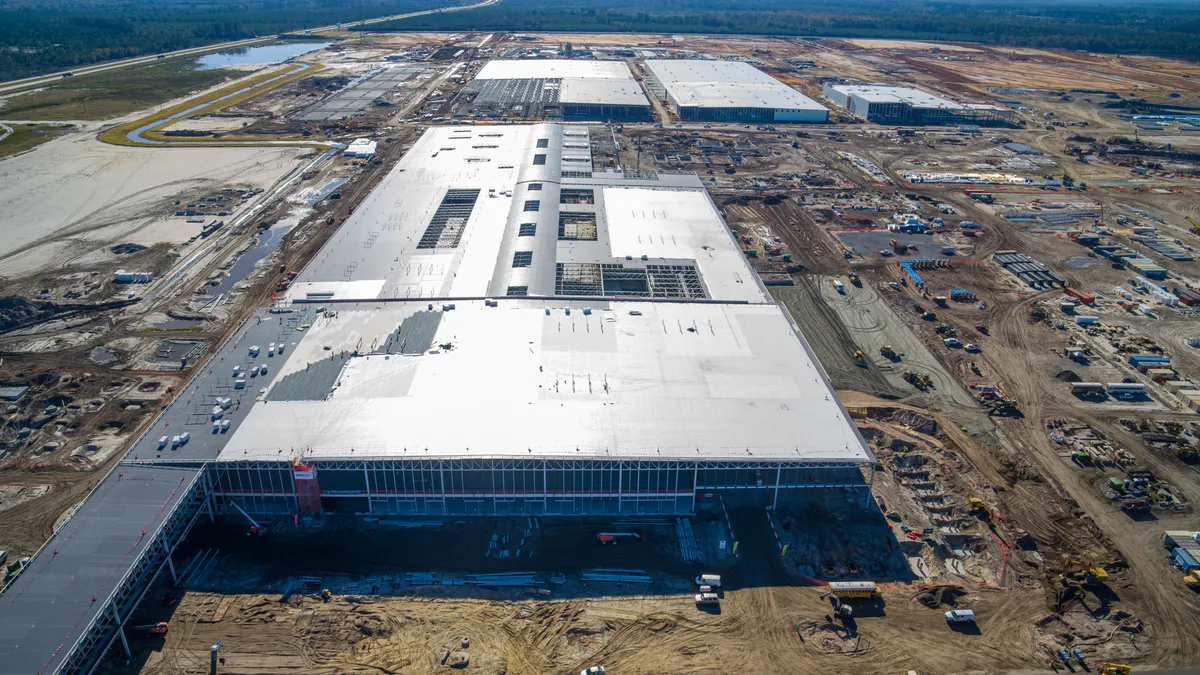Dive Brief:
- Data centers, manufacturing and electrification will drive rapid growth in demand for electricity over the next 10 years, requiring the U.S. to take a “portfolio approach” to ensuring resource adequacy, the Department of Energy said in a Wednesday report.
- Over the last decade, U.S. demand for electricity grew about 0.5% annually, DOE Undersecretary for Infrastructure David Crane said Tuesday. Some grid operators are now expecting annual demand growth of 5% to 6%, he said.
- DOE’s report recommended the power sector take advantage of “the full range of technology, planning, and operational solutions” to meet electricity demand, including long-duration energy storage, hydropower, nuclear energy, geothermal, grid-enhancing technologies and demand-side resources.
Dive Insight:
Natural gas provided more than 40% of total U.S. electricity generation in 2023, but building new plants without a strategy to address emissions “risks infrastructure lock-in and stranded assets,” DOE said.
New fossil fuel infrastructure development “has the potential to result in higher costs and unexpected lower reliability during extreme weather events than alternative options,” according to the report, “The Future of Resource Adequacy.”
The report highlights technology options for addressing U.S. electricity resource adequacy needs, and says those options “must be considered as parts of a portfolio of technologies that together provide sufficient and
timely quantities of power.”
Some clean energy alternatives can be deployed relatively quickly and cheaply, the agency noted.
“Accelerating energy efficiency programs and distributed energy resources provide critical tools to support reliability,” DOE said. “In the near-term, programs supporting continued deployment of energy efficient end-use technologies can cost-effectively reduce overall demand for power and can be especially valuable when targeted towards demand reduction during typical grid stress periods.”
Energy storage can also be deployed more rapidly than “traditional solutions,” DOE said. The report pointed to the addition of a pair of 230-MW battery systems in 2022 to the existing Desert Sunlight Solar PV facility, that required “only 10 months from signing the power purchase agreement to commercial operations and added almost $50 million a year worth of capacity value.”
Reconductoring transmission lines with advanced materials can also speed capacity expansion, the report said.
Through the bipartisan infrastructure law, Inflation Reduction Act and other actions, the Biden administration has provided “incentives and funding necessary to help utilities, grid operators, and system planners deploy these solutions and meet the needs of our growing economy,” DOE said in a statement. Those include tax credits for energy storage, nuclear and hydropower resources, consumer incentives, technical assistance for project developers, DOE loan programs and more.
“It is undeniable that electricity demand is expected to grow over the next decade as the manufacturing sector experiences explosive growth and artificial intelligence requires more and more energy,” Energy Secretary Jennifer Granholm said. “We see this is happening even as we improve efficiency, lower costs and better public health with electrification of vehicles and appliances.”















